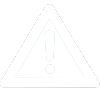In this first lesson, David introduces his modeling approach, shows how to build an armature, measure a model, and applies measurements to the portrait. He also covers the measuring tools, including calipers, dividers, and nails.
In the second lesson, David lays in the sculpture’s profile in between the measuring nails. He starts to block in the facial features and gradually adds more visual information. By the end of this lesson, you should be able to roughly pull all the forms together.
2h 39m 37s
Level 2
In this lesson, David shows you how to block in the neck and the shoulders. Then he details the hair, the ears, and the eyes and builds the relationships between the features. You will also learn how to balance out the symmetry of your sculpture.
2h 11m 51s
David begins this lesson by comparing the sculpture with the model and identifying the major issues. After fixing them, he works on the eyelids, the eyebrows, and the eye-nose relationship. David shows how to add volumes where it’s needed and how to check angles. In the last part of the lesson, he focuses on the right side of the face.
2h 42m 28s
Level 3
Now that we’ve reached the mid-way point, David starts this lesson by comparing the sculpture with the model again and identifying the new problem areas. He works on the forehead and the hairline and adds volume to the back of the head. In the last part of the lesson, David focuses on the left side of the face.
2h 40m 13s
In this lesson, David lays in the shoulders, the collar bones, and the sternum. He also adds mass to the lower part of the sculpture to balance out the upper part. Then David demonstrates how you can adjust the relationships between the right ear, the neck, and the hair by adding or removing volume and refining transitions. He adjusts the forehead-hairline-temple relationships the same way. Finally, you see how the right side of the portrait gets more and more specified.
2h 23m 52s
Level 4
In the beginning of this lesson, David refines the left side of the face and lays out the facial symmetry. After that, he cuts the sculpture’s neck through with a wire and changes the pose of the sculpture to give some movement to it. Then David adjusts the neck and the lower part to the new pose and adds more details to the neck connection with the head and the shoulders. You will also learn how to give movement to certain facial features like eyes or lips.
2h 21m 56s
In this final lesson, David modifies the sculpture’s eyes and hair direction, adds movement to its brows, eyes, and lips. He also describes the finishing techniques he uses including specific tools and materials: Gamsol solvent, clay-solvent mixture, baby powder, brushes, and cotton fabric.
2h 17m 59s

 UPDATE! October 1st, 2023: This version of the website will no longer receive updates. Please transition to the new website for the best experience.
UPDATE! October 1st, 2023: This version of the website will no longer receive updates. Please transition to the new website for the best experience. 







CONNECT
New Masters Academy
16182 Gothard St
Huntington Beach, CA 92647
Contact US